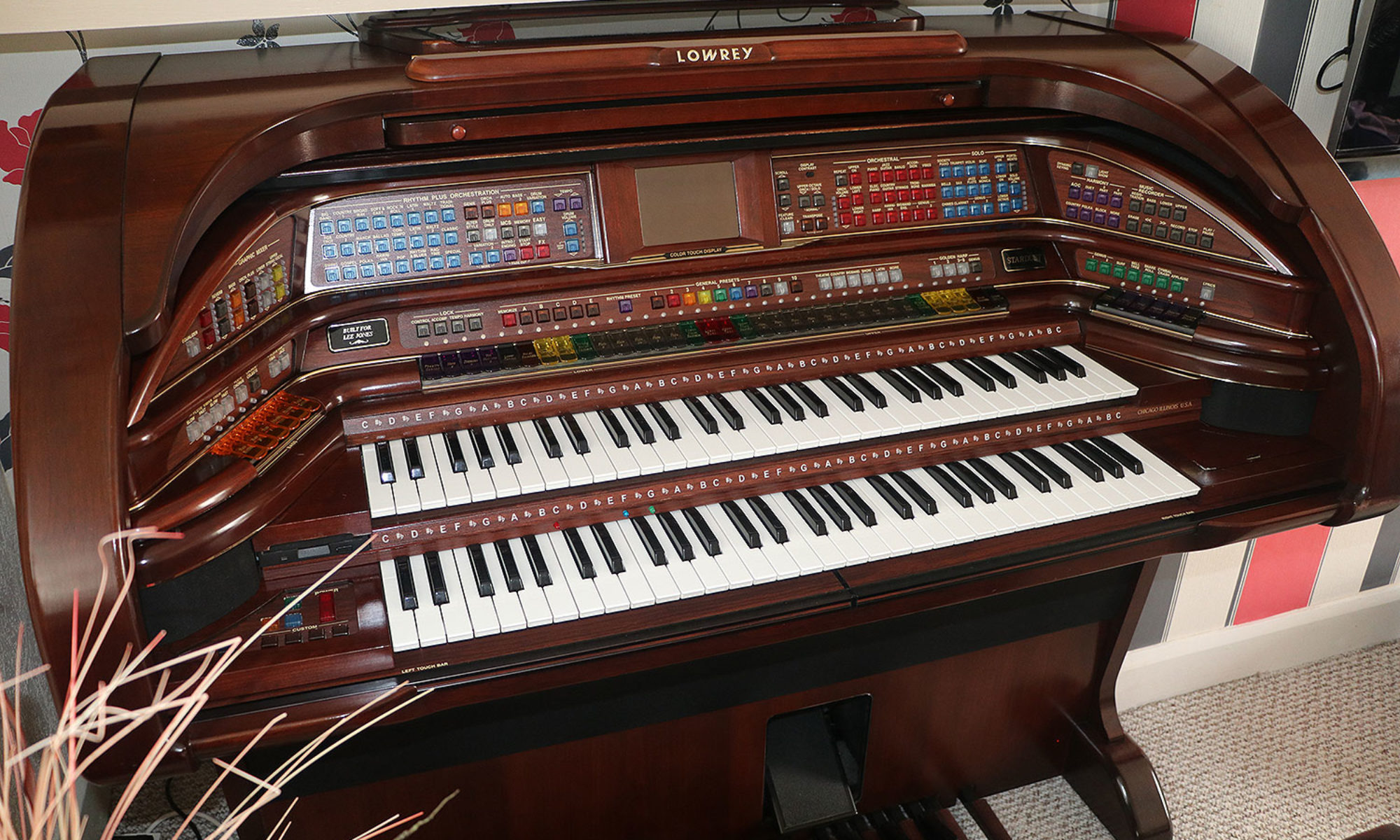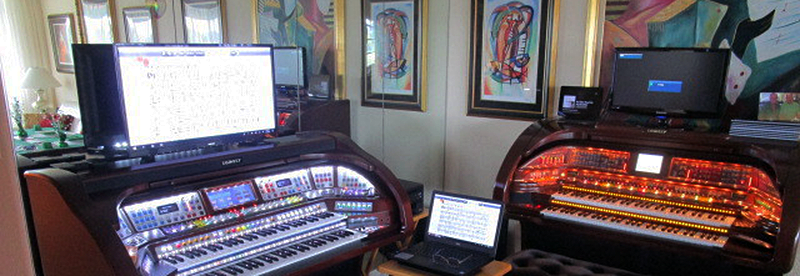This article was written by
Mr Wayne Wolf
Note by admin – Playing an organ for many people requires the use of music notation, but before this you will find you need to first search for the correct sheet or book, you then are required to open and keep it open and then turn the pages manually ! . . .Well their is an easier way, and Wayne will explain and show you how it’s done.
In this article Wayne demonstrates the placement of the Monitors as well as the description of using suitable software required to read and turn the pages. Clickable Links are provided throughout this article to enable you to view further info or buy certain items needed.
The Importance of Correct Placement of a Monitor
Of course you have to first remove the top music rack
(‘Music Rest’ as Trevor Flunder from Allen’s Music Centre calls it) to make room for the monitor used to see/read the music from the
Music Reader computer program.
A further Article of how this program works can be Found Here

Both of my Samsung ‘monitors’ are actually HD -TV sets- and this will give you the computer’s ‘sound’ that might be lost when using just an HDMI connection from the HDMI computers output to a ‘normal’ computer monitor that does not contain speakers. The Samsung HDMI TV sets that I’m calling monitors DO give you the normal sound output from the computer when using the HDMI output connection from PC to TV/Monitor, and you can ‘adjust’ the sound output using the TV’s remote control (and this is if you need to hear any sound at all from the computer- you don’t have to hear ANY sounds from the computer when using the Music Reader PDF4 PRO program– it’s just nice to have the normal sounds you might expect from your PC when hitting certain keys and especially if you’re going to use the computer to display more than music- you can also have a screen that’s used for web browsing where you WOULD want to hear sounds from the PC….I’ll get off the computer sound rant now…LOL..
How the monitor (TV in my case) sits upon the organ is important as I would also like to address the ‘shaking’ and ‘computer sound’ issues I experienced when using a regular (or in my case a nice big IPS) computer monitor instead of the HDMI TV’s I now use to display music from the Music Reader PDF Program.
There was no ‘computer sound’ available when using the regular (or IPS) computer monitor when using the HDMI Output from the PC via a 15-foot wire to the monitor’s HDMI input- because the ‘computer monitor’ did not contain internal speakers.
I’ve found that certain monitor ‘bases’ will cause the screen to ‘Wobble’ with the monitor in place on top of the organ whilst playing the pedals.
If you’re going to buy a new TV or monitor to use with the MusicReader PDF program, I would recommend that it has ‘feet’ on both sides of the TV/Monitor to support it on both sides of the screen- this causes minimal shaking when you’re playing the foot pedals.
 Close-UP of Samsung 24″ HDMI TV shows substantial plastic oval base with center support for screen- minimal ‘shaking’ occurs when playing pedals.
Close-UP of Samsung 24″ HDMI TV shows substantial plastic oval base with center support for screen- minimal ‘shaking’ occurs when playing pedals.
For an example, I bought a 32″ LG Monitor whose curved plastic base supported the monitor only from the 2-inch centre arm of the base- and when I played the pedals on the organ, the monitor would ‘shake’ rather excessively in my opinion, but It was OK when not playing pedals.

The newest Samsung 32″ HDMI flat screen smart TV I purchased from Best Buy has ‘feet’ on both sides of the screen- and this is the best solution for any ‘shaking’ going on whilst playing pedals on the STERLING.

The older Samsung HDMI TV I purchased a long time ago has a center-support, but (unlike the LG with a curved plastic base) the 24″ Samsung has a substantial plastic oval base with a 2-inch center stem to the monitor-and I don’t notice any shaking going on whilst playing pedals on my Lowrey ROYALE.
There is a 15-foot HDMI cable that connects the monitor to the DELL Laptop’s HDMI Output. By using a TV as a monitor instead of a standard computer monitor (most without internal speakers), you’ll also have the ‘sound’ from the PC- you can control the volume of the PC’s sound using the remote control that comes with the HDMI TV/Monitor.
I’ve also connected a video cable from the back of the STERLING’s MIDI panel (VIDEO OUT) to the VIDEO IN of the Samsung 32″ HDMI TV- so that it can be used in a Karaoke mode by changing the TV’s INPUT SOURCE from HDMI to VIDEO- but displaying the words of your Karaoke song means you’ll lose your PDF music display- Ideally if you need music to play a song, a second monitor for the words of the Karaoke song would be the best solution- or using actual sheet music on the adjustable rack might also work if it wasn’t in the way of the Karaoke words….
TO MOST PEOPLE- THIS IS NOT IMPORTANT AT ALL– it’s just something I did (to make the video connections from organ to TV while the organ was out from the wall- it’s a beast to move even with furniture sliders- so even though I’ll probably never use the Karaoke function, I’ve made the connection and won’t have to pull the organ out from the wall again!
So enough of my ‘chatter’ about things you probably already knew- but I wanted to put it out there to let others know what worked (and didn’t work) for me with my own Music Reader PDF4 PRO program setup. Another article how to use it is here

